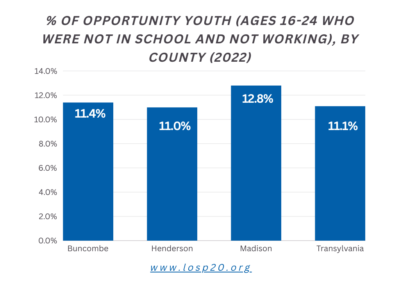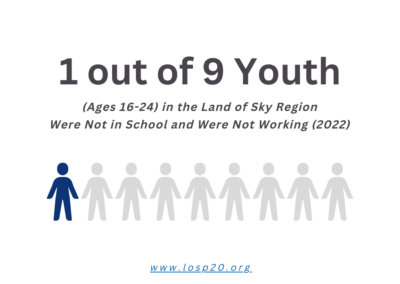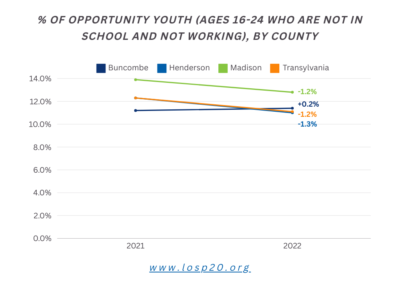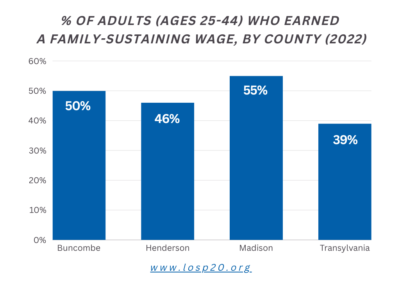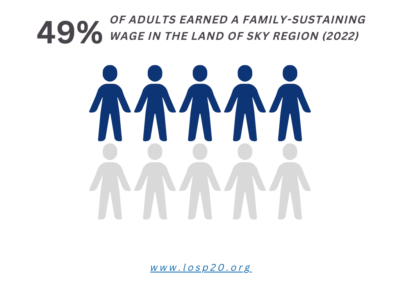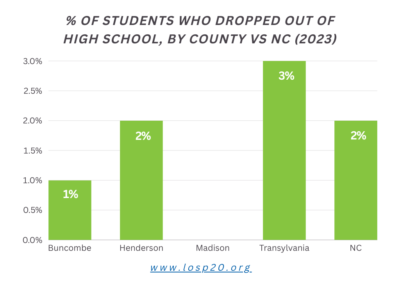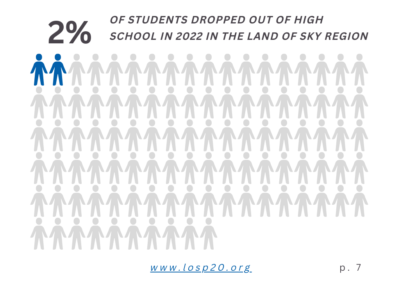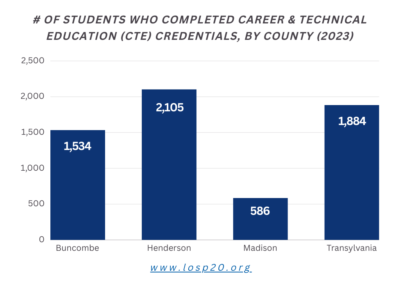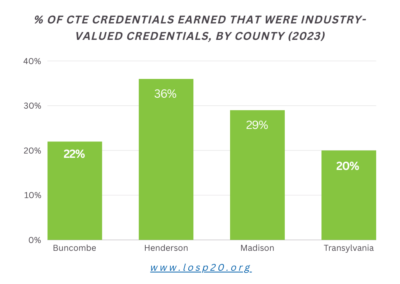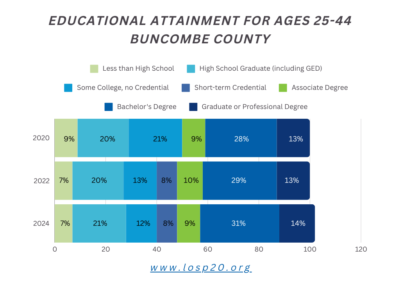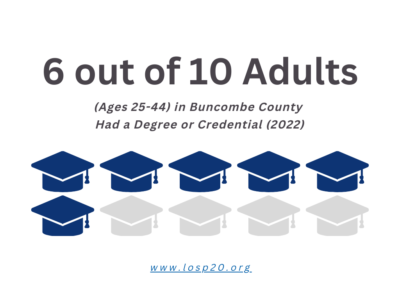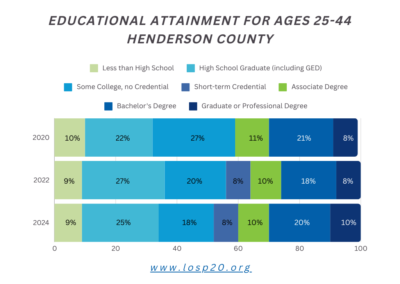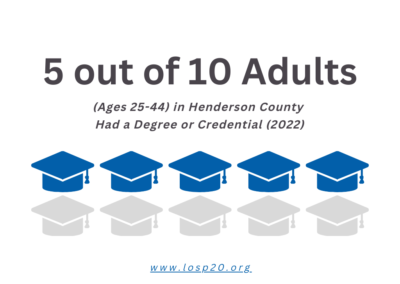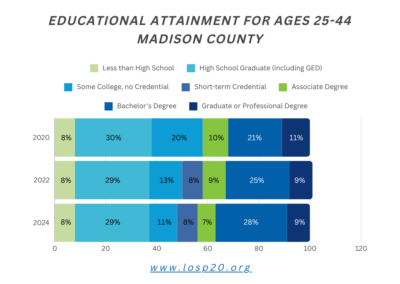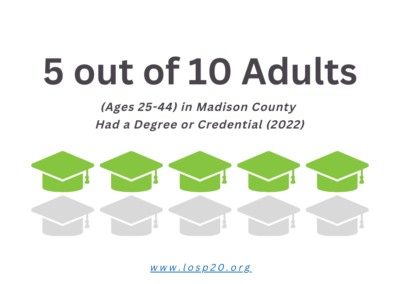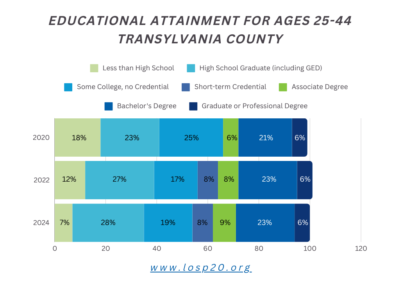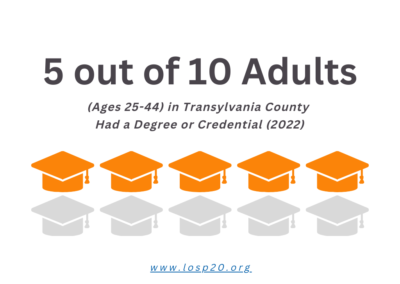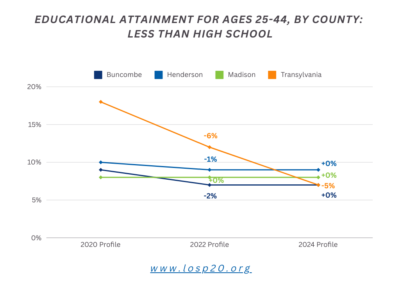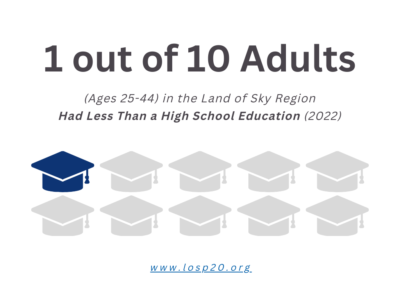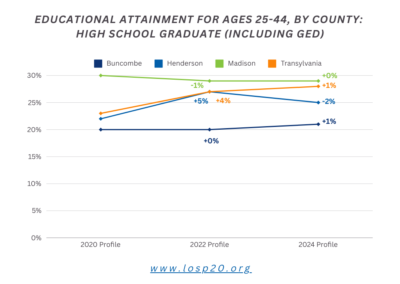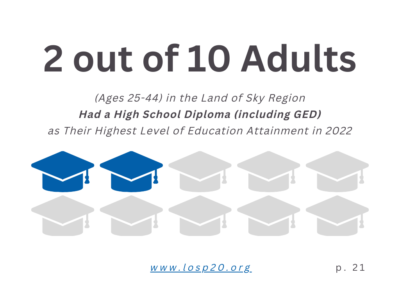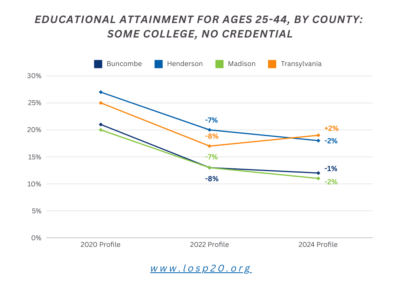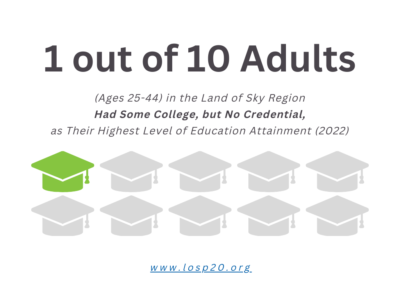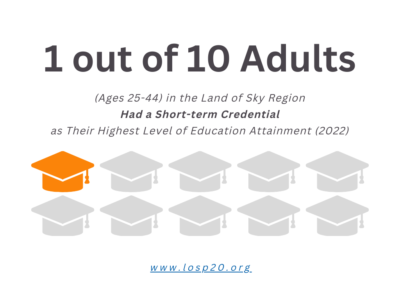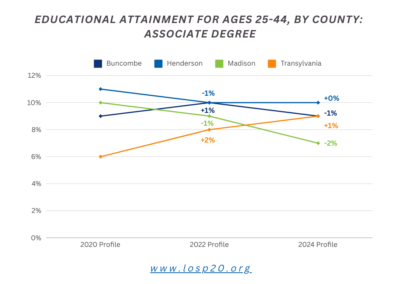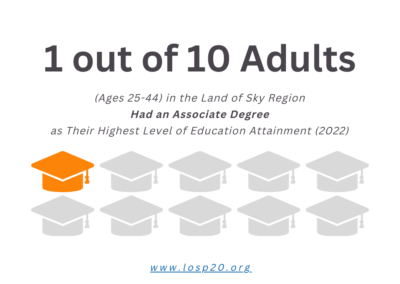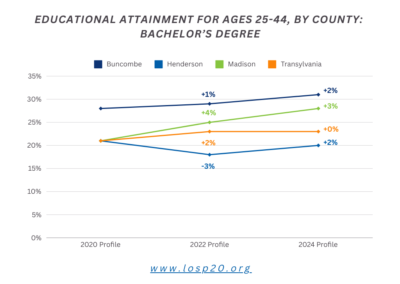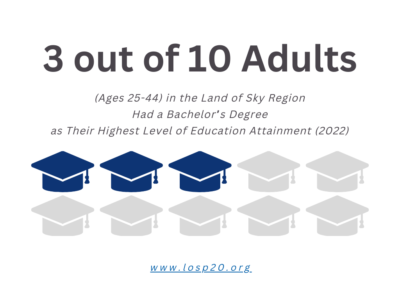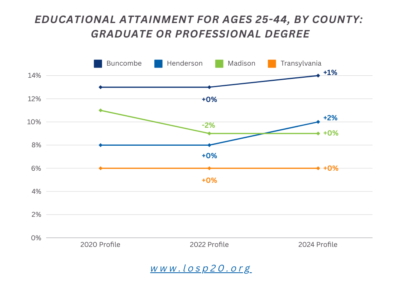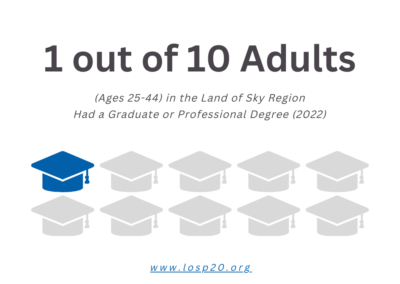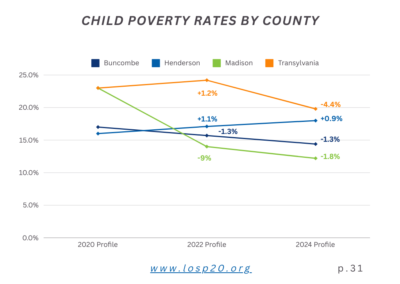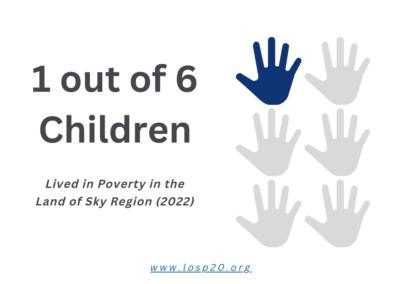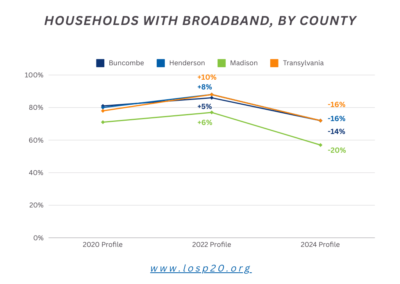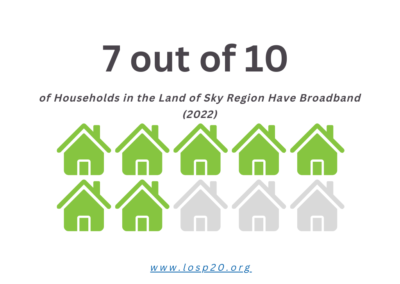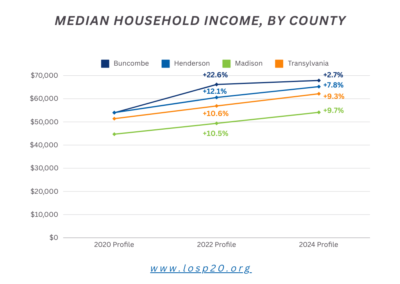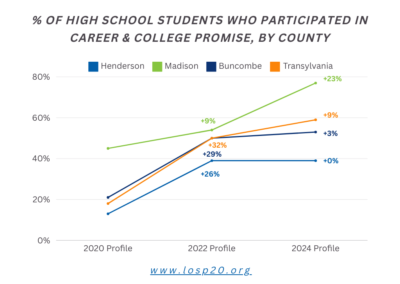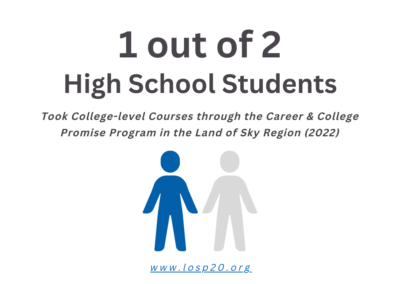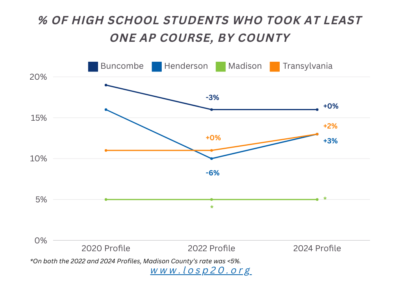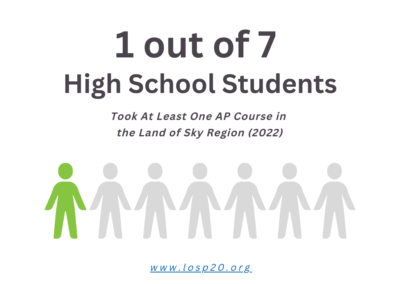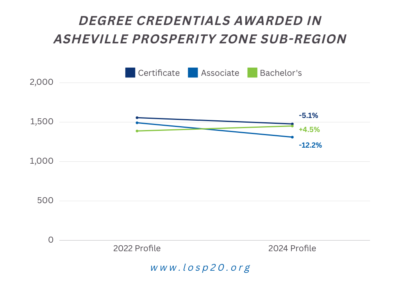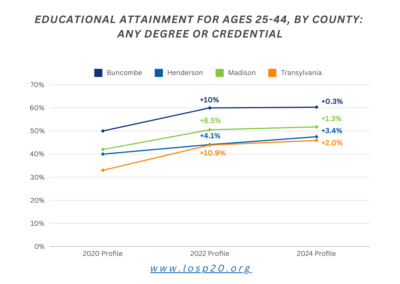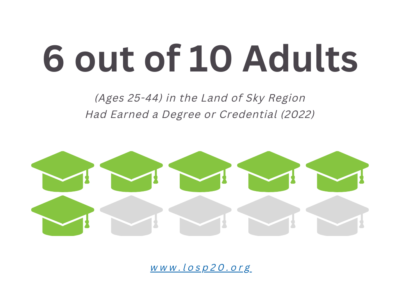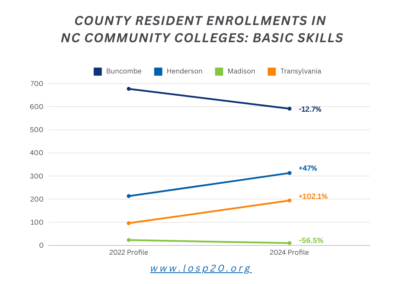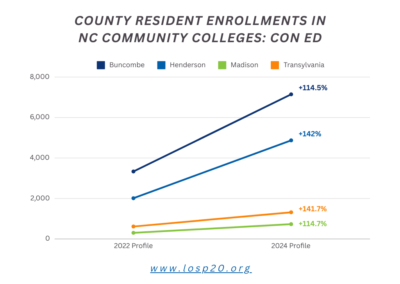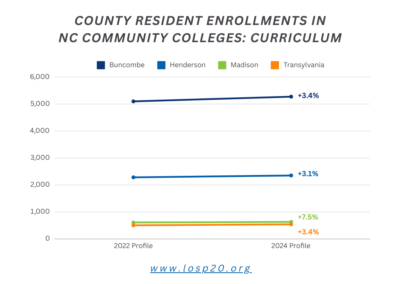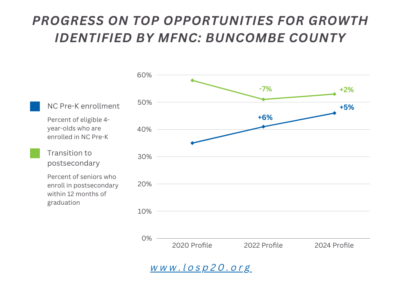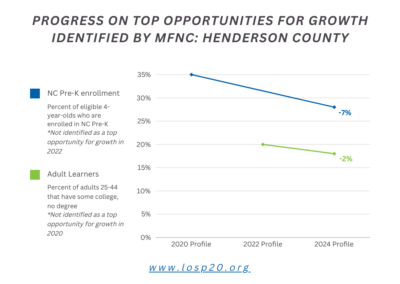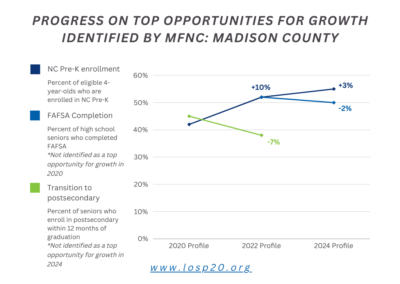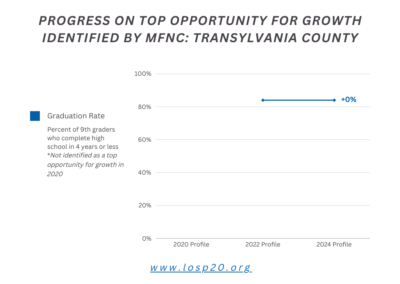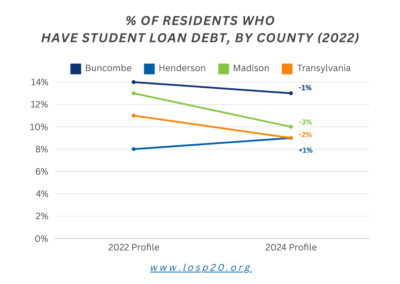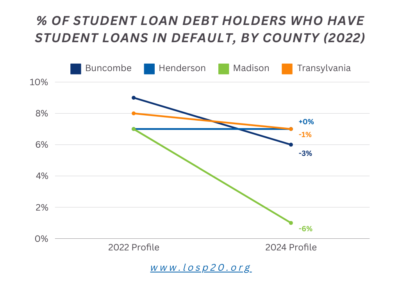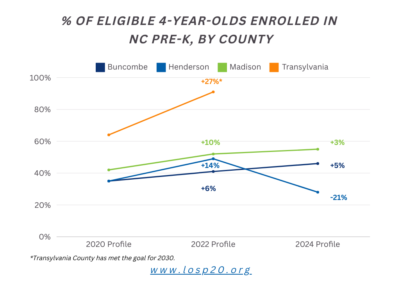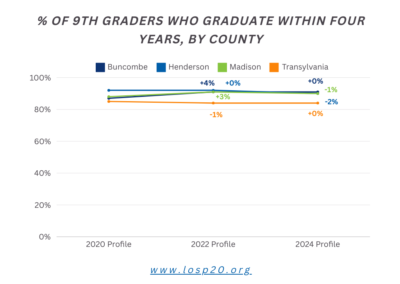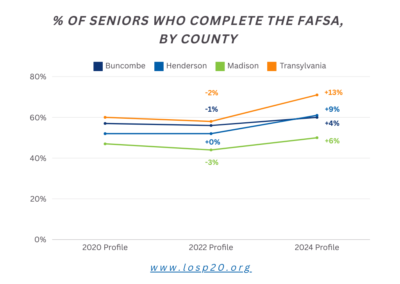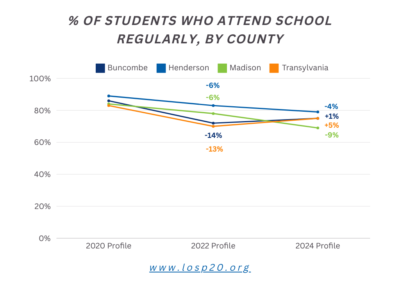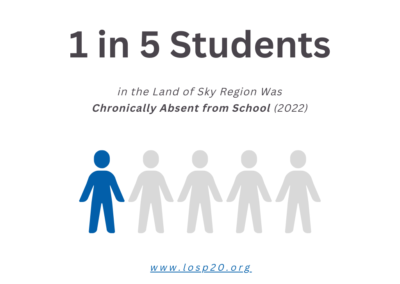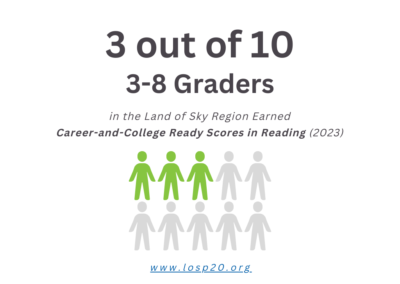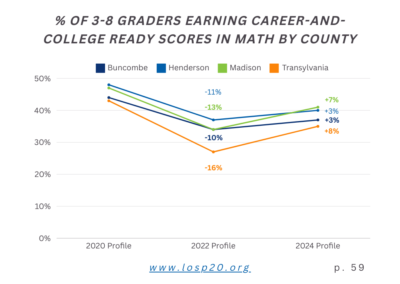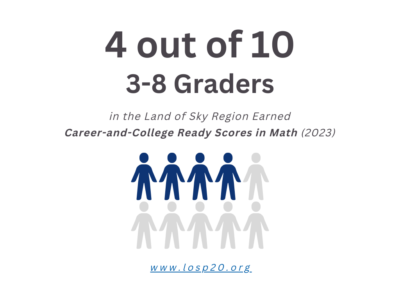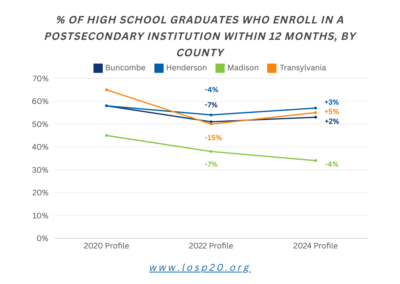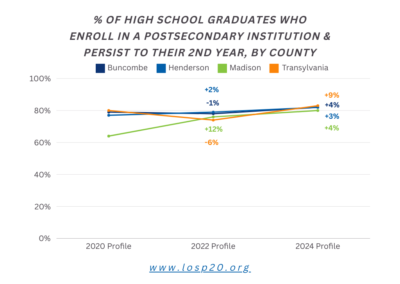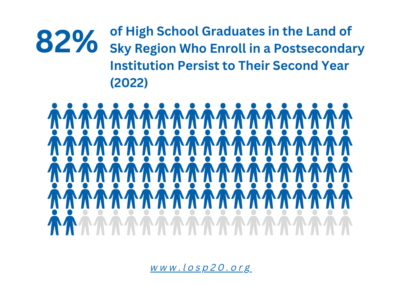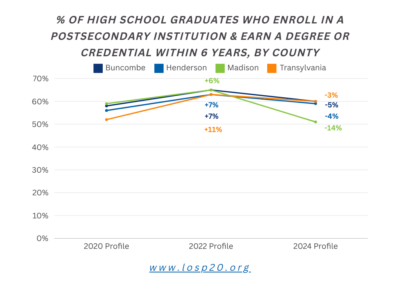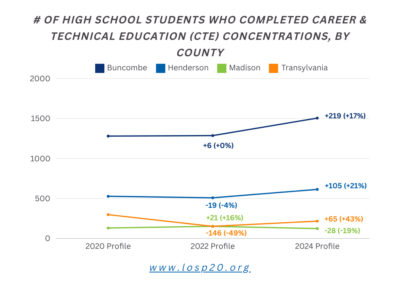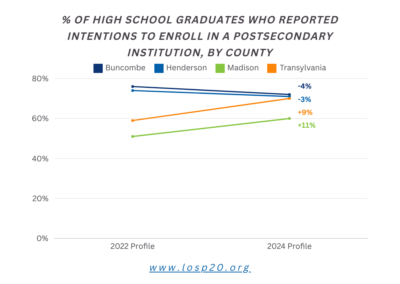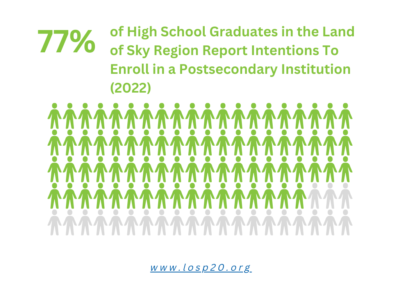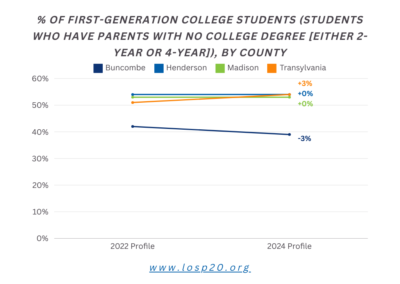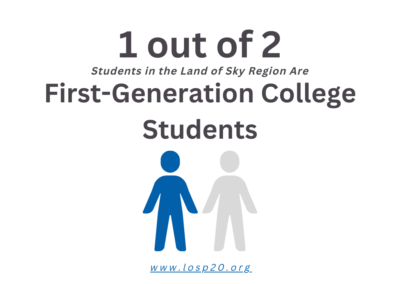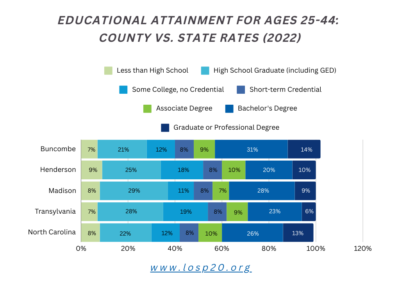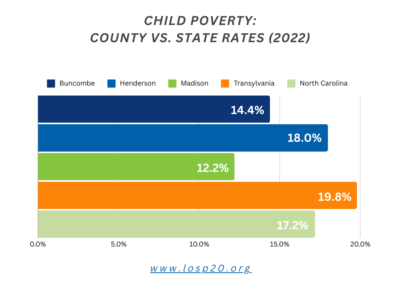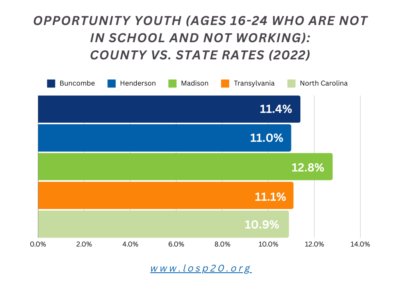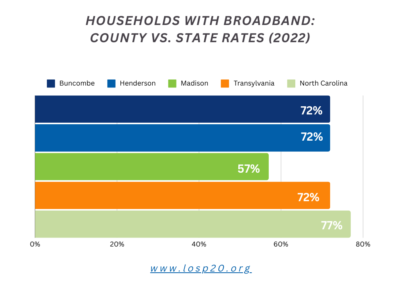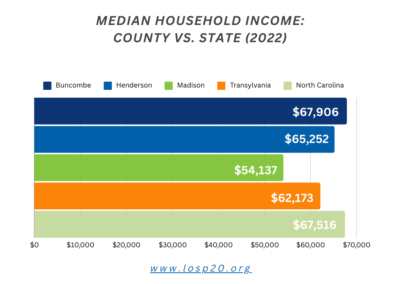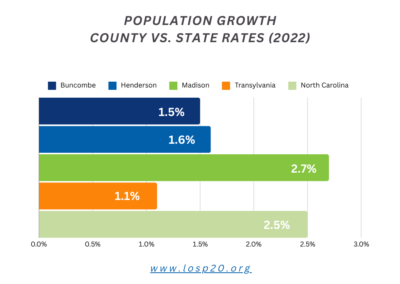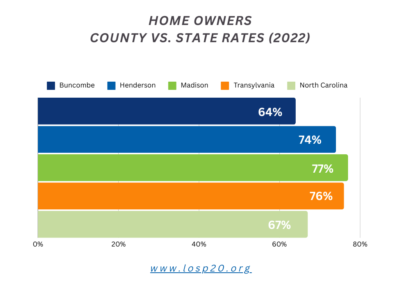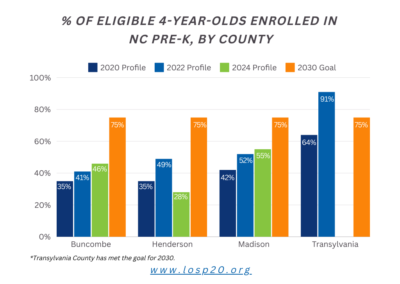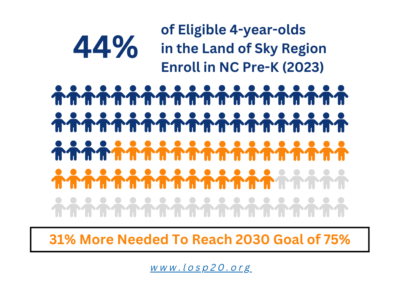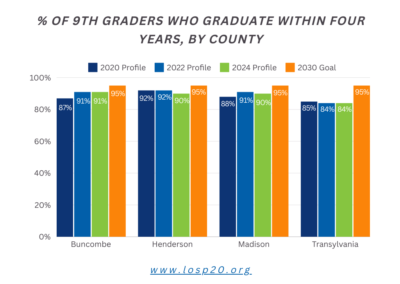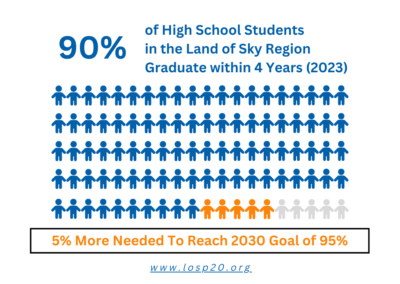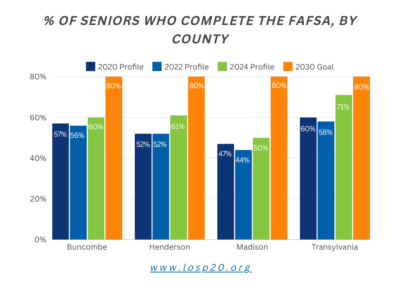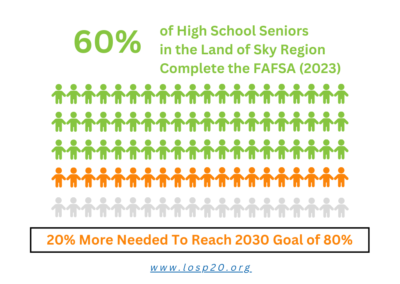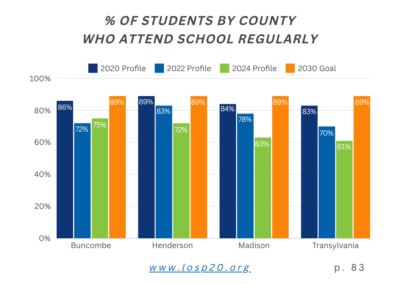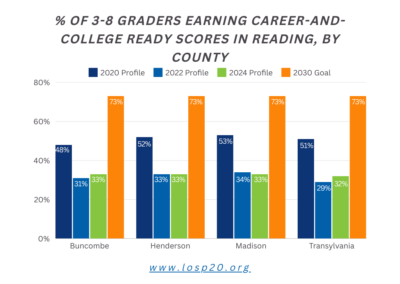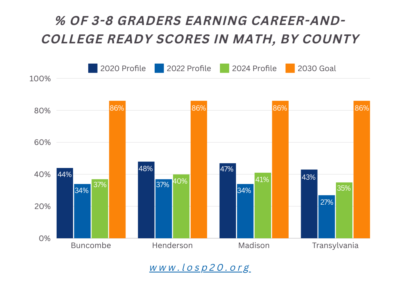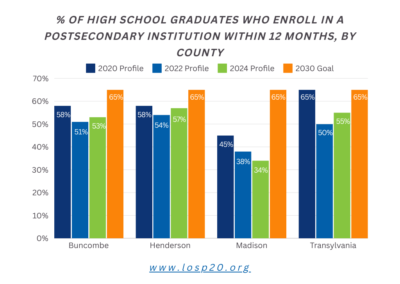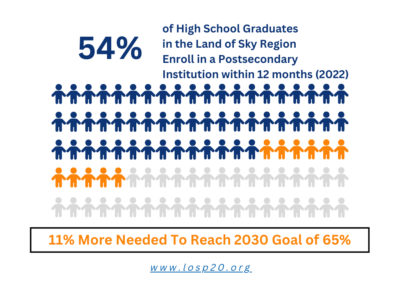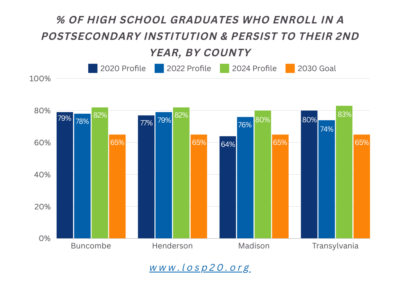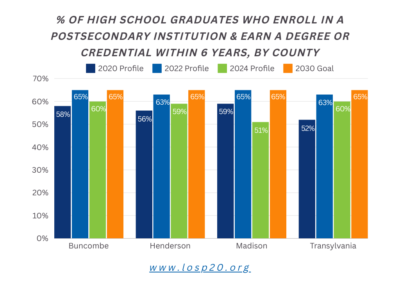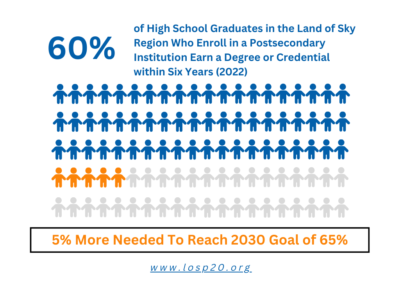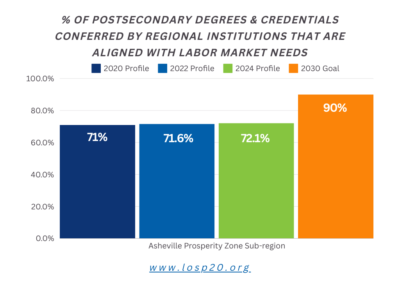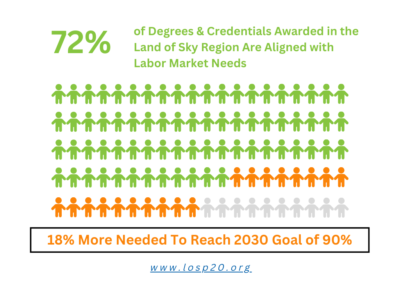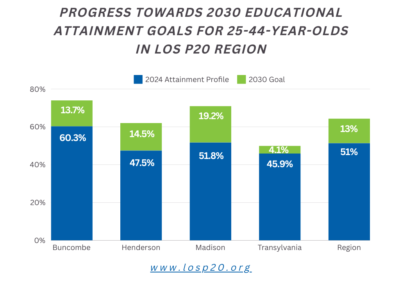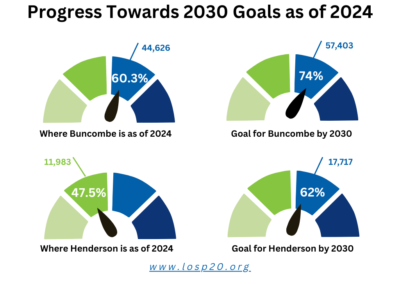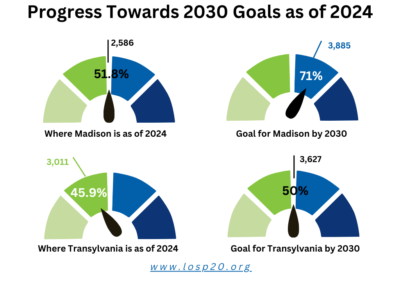By 2030, we will need 82,000 workers with the credentials and skills to fill workforce demands in our four-county region of Buncombe, Henderson, Madison, and Transylvania.
The P20 Council realizes that the ability to make significant gains in the targeted educational and workforce attainment efforts must include an equity lens in which diversity, inclusion, and accessibility to all resources must be a major component of each strategic goal.
Our work is guided by four strategic directions:
1
Enhance Pre-K and Early Childhood Education programs’ enrollment.
2
Improve student success rates in K-12 education.
3
Improve postsecondary success.
4
Align educational objectives and outcomes to desired employee competencies.
Our four strategic goals are:

How did we calculate our educational attainment goal?
Using updated calculations for postsecondary attainment and population trends, Carolina Demography determined the projected number of credentialed individuals each county would need to contribute to meet this goal. They estimated that the four counties within the Land of Sky region will need to contribute about 82,000 individuals with a postsecondary credential or degree in 2030.
The Land of Sky P20 Council strives to “close the gap” between what is predicted and what is needed. In other words, our overall goal is to steer our region toward producing the 10,000 credentialed and employed individuals that bridge the current trajectory of 72,000 and the needed workforce of 82,000. This overall goal of 82,000 will be the Land of Sky region’s “slice” of myFutureNC’s overall state goal of 2 million North Carolinians with a postsecondary credential or degree by the year 2030.
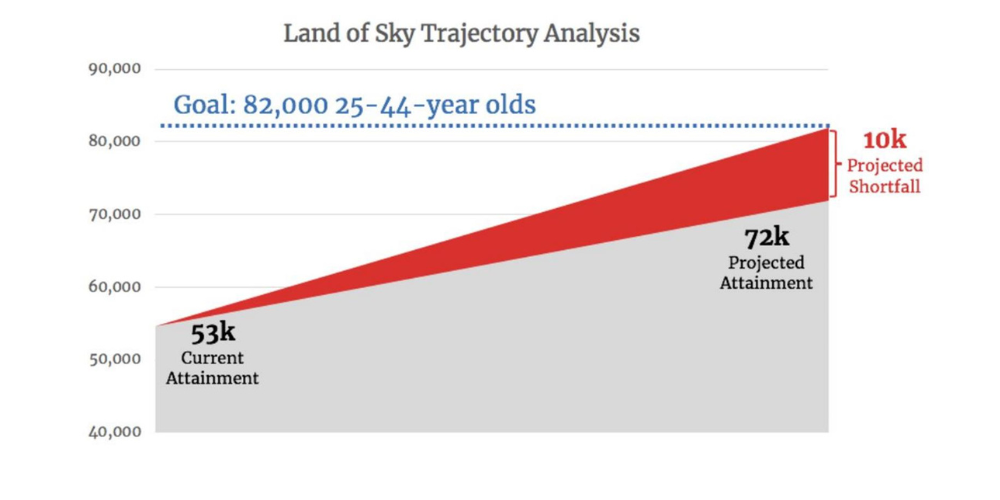
THERE IS A DEFICIT OF 10,000 INDIVIDUALS NEEDED BY 2030
P2o Strategy
Initiatives
Implement initiatives that lead to educational attainment and gainful employment based on networking opportunities identified utilizing the inventory of local and national resources/asset mapping.
Best Practices
Implement “Best Practices” and strategies as identified by workgroups that will facilitate connecting the dots along the attainment “pipeline.”
Policy
Establish policy recommendations to assist stakeholders at various points along the attainment “pipeline” to align strategies from Pre-K to gainful employment.
Impact Model
Develop a collective impact model of educational attainment that leads to gainful employment that is sustainable beyond 2030, is financially secure, and has an established governing structure.
The Educational Attainment Collaborative Ecosystem
The Educational Attainment Collaborative Ecosystem shows the key stakeholders that are critical to reaching our goal.
Many factors, including internal, external, and policies plus initiatives like funding and technology, impact educational attainment and the ability for students to find gainful employment.
Working together, advocacy groups, educational institutions, workforce development councils, economic developers, city and county governments, and employers that need individuals with various credentials can help students get the education and skills they need for everyone to thrive.


The Assets Map
Our assets are entities, organizations, and initiatives that lead to a long-term, sustainable approach to align credentials and degrees to the needs of local employers.
The Assets Map assists with guiding our region’s work and creating a baseline of best practices that would lead to developing strategies for the strategic plan.
Dashboard
Data-driven to measure our progress forward.
To track North Carolina’s goal of reaching 2M employees with high-quality credentials or post-secondary degrees by 2030, myFutureNC measures the state’s progress. It helps determine if the state is on target in attaining its goal or adjustments are needed along the way.
Countdown To Reach Our Educational Attainment Goal
Day(s)
:
Hour(s)
:
Minute(s)
:
Second(s)
County Data and Resources
myFutureNC and Carolina Demography collaborated to create the myFutureNC Attainment Dashboard to help local communities develop action plans driven by data. This tool features profiles for every North Carolina county that highlights county-level education attainment and performance on key myFutureNC education and workforce metrics. This data helps with decision-making to increase educational attainment in our four counties: Buncombe, Henderson, Madison, and Transylvania.
